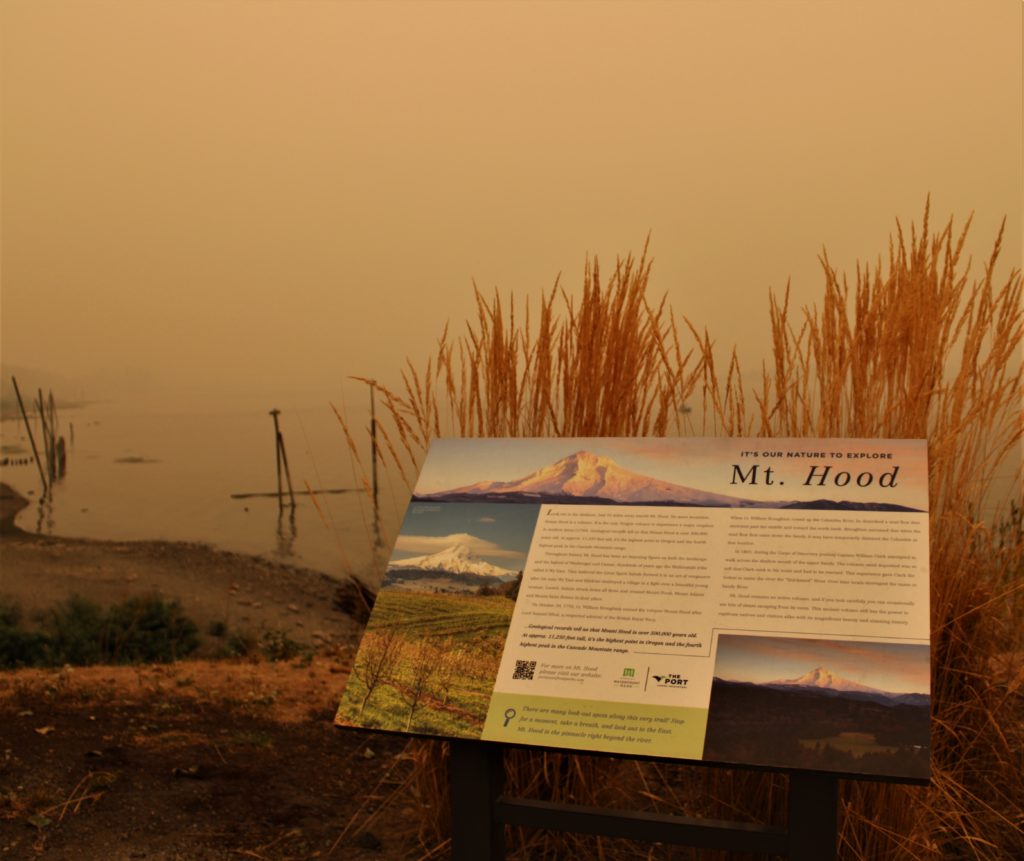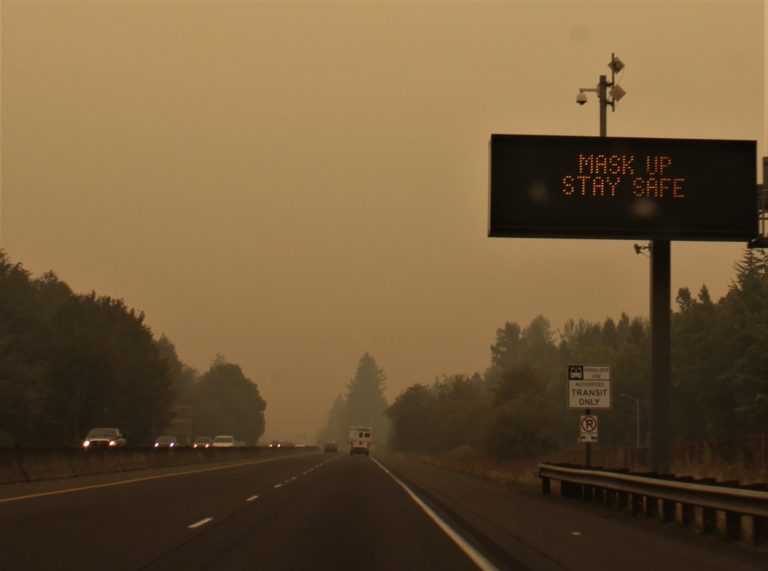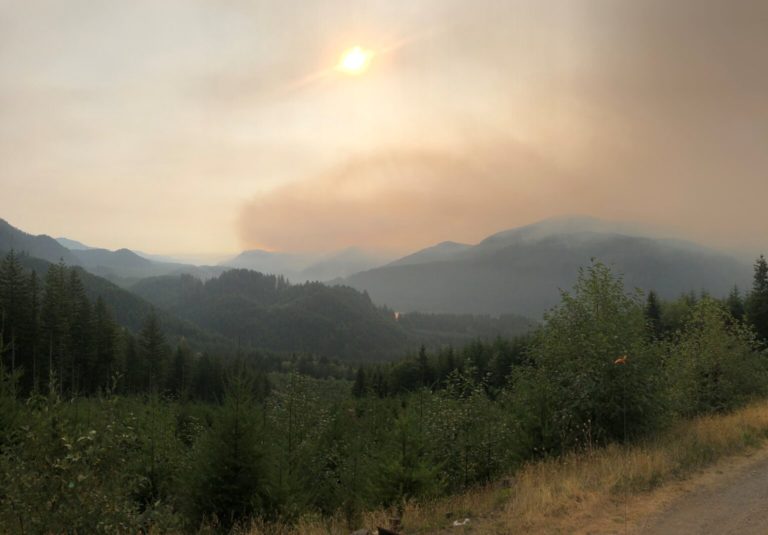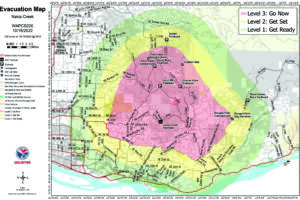Wildfires continue to burn in Northwest Oregon, Southwest Washington
Most of the smoke is coming from wildfires burning in Oregon and California. As of Thursday, there were at least 35 wildfires burning in Oregon, including the Riverside Fire near the town of Estacada, Oregon, which has burned more than 135,000 acres; the Beachie Creek Fire in Marion County, Oregon, which has burned nearly 200,000 and is just one mile away from the Riverside Fire; the Holiday Farm Fire outside Springfield, Oregon, which has burned more than 300 buildings; and the Lionshead Fire in the Cascade Mountain Range, which has decimated the small town of Detroit, Oregon, and burned nearly 170,000 acres. The Almeda fire in southern Oregon, which destroyed approximately 600 homes and killed at least four people, is now 100 percent contained.
In Southwest Washington, the Big Hollow Fire, located about 15 miles northwest of Carson, continued to burn this week. Parts of the area around the Big Hollow Fire are under a Level 1 “Get Ready” evacuation order, including the towns of Amboy and Yacolt in northwest Clark County and a Level 3 “Go” order for Government Mineral Springs.
On Thursday, Clark Regional Emergency Services Agency (CRESA) reported that the fire had burned 22,973 acres and was 15 percent contained. Crews working on the Big Hollow Fire increased this week, with 327 firefighters working to contain the fire compared to 262 fire personnel earlier in the week.
Tips for staying healthy on smoky days
Smoke from the wildfires can cause health problems, especially in sensitive groups. PeaceHealth recently offered tips on staying healthy during the smoky conditions:
- Stay indoors and keep doors and windows closed. Use wet cloths to plug up any cracks where smoke may seep through.
- Keep indoor air clean by using a portable air purifier. Run an air conditioner to keep air circulating, but close the fresh-air intake. Use HEPA or MERV-3 filters to trap pollutants.
- Do not add to indoor air pollution by burning incense, candles, fireplaces or cigarettes. Refrain from vacuuming, as it can stir up particles in the home.
- Stay hydrated and drink water to help your body fend off particles and other irritants in the air. Use artificial tears or saline to help moisten eyes.
- Regular cloth masks do not protect against wildfire smoke. If you must go outside, wear a respirator mask marked “NIOSH” with N95 or P100.
- When driving, keep windows closed and turn the air conditioner to “recirculate” mode to lower particle levels in vehicles. Be sure to vent air occasionally so you do not build up carbon dioxide levels, which can make you sleepy.
- Remember to care for pets and keep them inside as much as possible.
- Have an evacuation plan in place in case you need to leave your home (in the event of a local wildfire). See a list of steps to take at cdc.gov/disasters/wildfires/beforefire.html
“Wildfire smoke can irritate your lungs and affect your immune system making you more prone to lung infections, including the virus that causes COVID-19,” PeaceHealth warned in its news release. “People who currently have or have had the coronavirus may be at increased risk of health effects due to their lung and/or heart function being compromised by the virus.”





